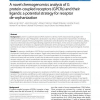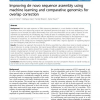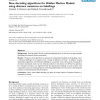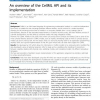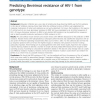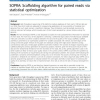BMCBI
2010
13 years 11 months ago
2010
Background: G protein-coupled receptors (GPCRs) represent a family of well-characterized drug targets with significant therapeutic value. Phylogenetic classifications may help to ...
BMCBI
2010
13 years 11 months ago
2010
Background: With the rapid expansion of DNA sequencing databases, it is now feasible to identify relevant information from prior sequencing projects and completed genomes and appl...
BMCBI
2010
13 years 11 months ago
2010
Background: Tiling-arrays are applicable to multiple types of biological research questions. Due to its advantages (high sensitivity, resolution, unbiased), the technology is ofte...
BMCBI
2010
13 years 11 months ago
2010
Background: There is an increasing usage of ion mobility-mass spectrometry (IMMS) in proteomics. IMMS combines the features of ion mobility spectrometry (IMS) and mass spectrometr...
BMCBI
2010
13 years 11 months ago
2010
Background: Existing hidden Markov model decoding algorithms do not focus on approximately identifying the sequence feature boundaries. Results: We give a set of algorithms to com...
BMCBI
2010
13 years 11 months ago
2010
Background: Experimental screening of large sets of peptides with respect to their MHC binding capabilities is still very demanding due to the large number of possible peptide seq...
BMCBI
2010
13 years 11 months ago
2010
Background: CellML is an XML based language for representing mathematical models, in a machine-independent form which is suitable for their exchange between different authors, and...
BMCBI
2010
13 years 11 months ago
2010
Background: Maturation inhibitors are a new class of antiretroviral drugs. Bevirimat (BVM) was the first substance in this class of inhibitors entering clinical trials. While the ...
BMCBI
2010
13 years 11 months ago
2010
Background: All polypeptide backbones have the potential to form amyloid fibrils, which are associated with a number of degenerative disorders. However, the likelihood that amyloi...
BMCBI
2010
13 years 11 months ago
2010
Background: High throughput sequencing (HTS) platforms produce gigabases of short read (<100 bp) data per run. While these short reads are adequate for resequencing application...
